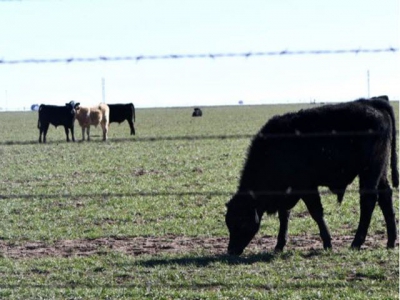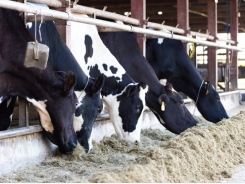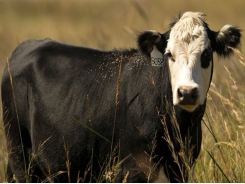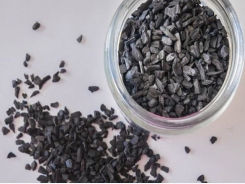Choice for grazing cattle on wheat based on gain or grain

Whether cattle producers in Texas High Plains continue to graze cattle on wheat pastures depends on if end goal is cattle gain or wheat grain production.
Cattle in the High Plains should be removed from wheat pastures where grain production is the main objective.
In the Texas High Plains, where more than half of the wheat crop is grown with a dual purpose — cattle grazing and grain production — now is the critical time to be making the "gain or grain" decision, according to Texas A&M AgriLife Extension Service experts.
AgriLife Extension agronomist Dr. Jourdan Bell and research associate Carla Naylor said the decision on when to remove cattle from grazing wheat fields boils down to economics.
The cutoff date for removing cattle from wheat fields for crop insurance purposes in this region isn’t until March 15, AgriLife Extension said in its announcement. However, Bell and Naylor said the most profitable time to optimize grain yields is at the first hollow stem of the wheat plant, which is already occurring or will be soon across most of the High Plains.
“Some producers are willing to take a hit on their grain production to get more gain on their cattle,” Bell said. “It all depends on cattle prices versus grain prices, and with this year’s low grain prices, some producers will choose to graze just a little longer.”
For example, she said a producer who has a 75 bu. wheat crop and loses 30 bu. to grazing on 100 acres may lose about $12,000 in grain. On the other hand, if the producer's cattle are gaining 2 lb. per day, he could be making more on the gain than he loses on the grain, depending on the stocking rate, acreage and additional grazing days, Bell said.
Naylor explained that first hollow stem is used to describe this critical period because “every day the producer grazes beyond first hollow stem, they can expect anywhere from 1% to 5% grain yield loss, depending on the maturity of the wheat.”
Irrigated wheat will be closer to hollow stem than dryland wheat, Bell added. Other factors that can affect the maturity of the wheat are variety, planting date, fertility and water stress.
She said during the vegetative growth stage, the growing point of the plant, or the wheat head, remains in the crown below the soil surface, which allows cattle to graze without nipping off the head. However, once that head moves above the soil line — when it breaks dormancy and begins reproductive development — it is susceptible to damage from grazing.
“Early-planted and early-maturing wheat varieties are likely to have reached this critical stage where the plant is transitioning from a vegetative stage to reproductive development,” Bell said. “At this point, the wheat head will begin moving above the soil surface.”
Producers should begin checking their wheat outside the grazing area for the growing point or first hollow stem, Naylor said. If the wheat has transitioned and grain production is the end goal, it is time to remove cattle.
Related news
Tools

Phối trộn thức ăn chăn nuôi

Pha dung dịch thủy canh

Định mức cho tôm ăn

Phối trộn phân bón NPK

Xác định tỷ lệ tôm sống

Chuyển đổi đơn vị phân bón

Xác định công suất sục khí

Chuyển đổi đơn vị tôm

Tính diện tích nhà kính

Tính thể tích ao




 Cornell model helps reduce nitrogen losses from dairy…
Cornell model helps reduce nitrogen losses from dairy…  Biochar may help tackle methane emissions from dairy…
Biochar may help tackle methane emissions from dairy…